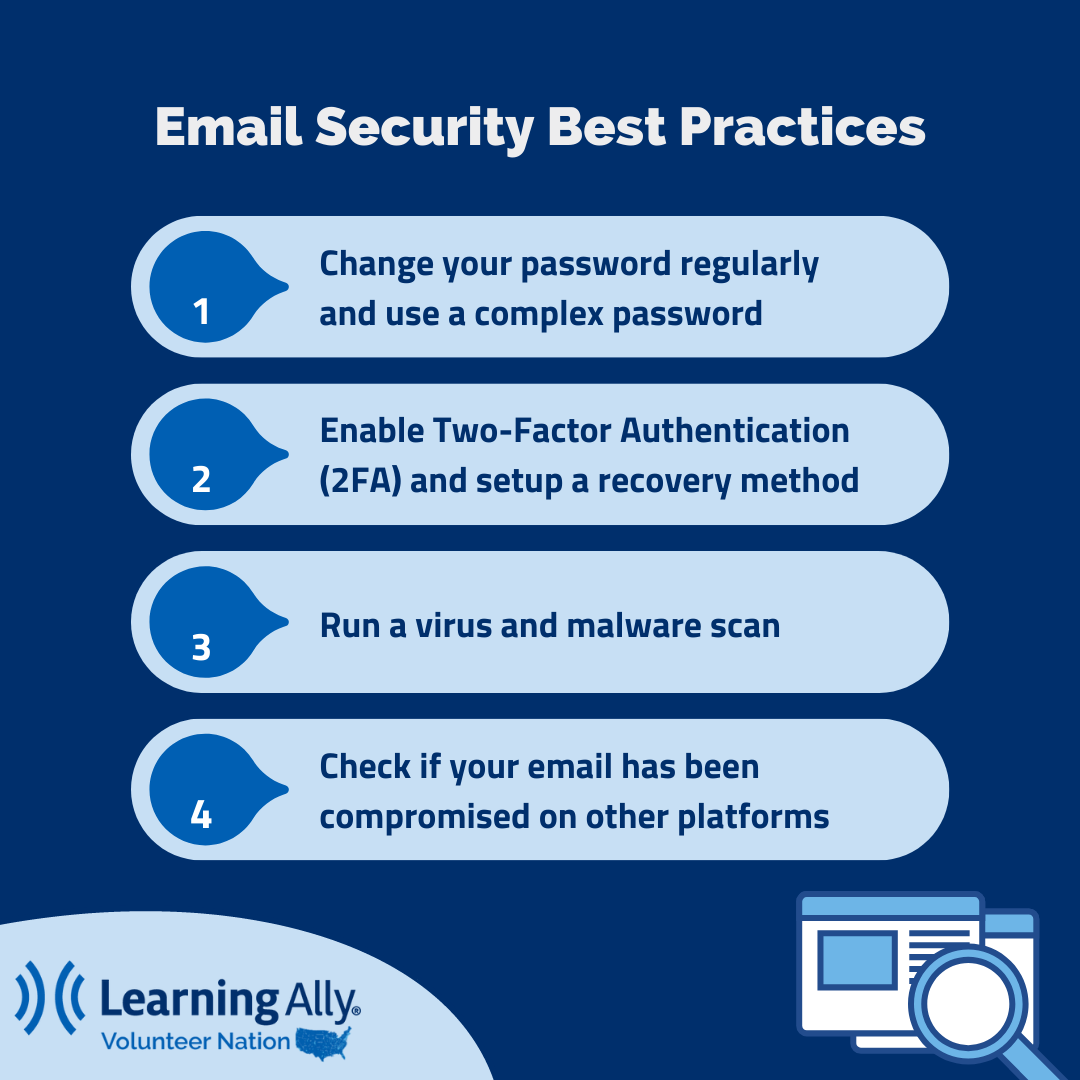Email Security Best Practices
In a digital volunteer environment, it's essential to protect yourself on the internet.
Maria Lelie
Last Update há 3 anos
Safeguarding your email and digital identity has become increasingly important. As an organization that offers virtual volunteerism and frequent use of email, we want to recommend email security best practices to ensure our volunteer community is protecting itself against bad actors.
Learning Ally recommends the following best practices to help you protect yourself against bad digital actors. Links and resources below.

Change your password regularly and use a complex password. Top tips for a secure password
- Do not reuse passwords
- Do not use information about yourself such as age, name, city, pet’s name, etc
- Use special characters such as $@!#
Enable Two-Factor Authentication (2FA) - based on your provider
- Many email providers offer two-factor authentication as an additional security measure. This method requires a password and some other form of identification, such as a biometric or a mobile phone number, to access the two-factor authentication.
- How to Enable 2FA
Setup a recovery method with a phone number or alternate email address
- Most email providers will walk you through this step when setting up your email for the first time. However, you can also find guidance on setting up a recovery method from your email provider in the settings section.
Run a virus and malware scan
- For Windows users: Windows Security
- For macOS users: Antivirus for mac
Check if your email has been compromised on other platforms
- We recommend this free tool
